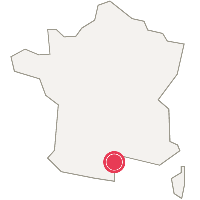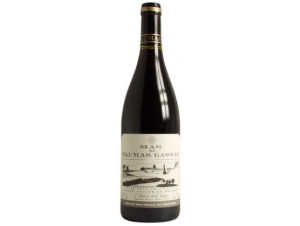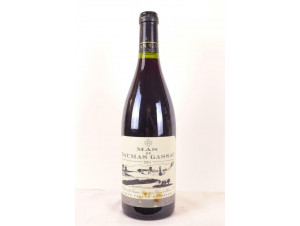You have no items in your shopping cart.
Languedoc-Roussillon
Mas de Daumas Gassac
(27 customer reviews)
Mas de Daumas Gassac is a vineyard located in the commune of Aniane, in the Gassac valley, in the Hérault department, in the Occitanie region. It produces wines classified as vin de pays de l'Hérault, with an original choice of grape varieties, as it includes varieties other than those used in the Coteaux du Languedoc appellation. Find out more
 Recommended by
Recommended byJancis Robinson - Wine Decider - Parker Wine Advocate
-

Shipped in
secured packaging -

Garantie anti-casse :
Prise en charge totale
The winemaker
The history of Mas de Daumas Gassac
In 1970, while wandering through the Hérault hinterland in search of a house, Véronique and Aimé Guibert fell under the spell of an abandoned mas belonging to the Daumas family, located in the Gassac valley. The name given to the Mas de Daumas Gassac estate seemed obvious.
As soon as they acquired the property, the Guibert couple set about creating the vineyard, with the first plantings of Cabernet Sauvignon sourced from Médoc châteaux. At the same time, they built the winery and vat room. After a few initial vintages, the Mas de Daumas Gassac domaine was noticed in 1982 by the Gault & Millau Guide, which praised the wine and launched the estate's expansion. Since then, Mas de Daumas Gassac wines have won countless awards and accolades.
The Mas de Daumas Gassac vineyard
The soil at Mas de Daumas Gassac is deep and exceptionally rich in mineral oxides (iron, copper, gold, etc.). Perfectly drained, it is low in humus and plant matter. The soil structure lends itself to vine-growing, thanks to deep soils that allow the roots to go down deep to feed, drainage that avoids excess moisture and poor soils that force the vine to create rare, dense aromas.
The rather cold climate of the Haute Vallée du Gassac contrasts with that of the usually warmer terroirs where the vines are grown. This particularity delays the flowering of the vines by around three weeks compared with the Languedoc average, and brings extreme complexity and finesse to the wines of Mas de Daumas Gassac.
The ancient and exceptional grape varieties of Mas de Daumas Gassac
The winemakers at Mas de Daumas Gassac have chosen to plant old, non-cloned grape varieties. Their yields are rather low, but their organoleptic richness is prodigious. Most of the red grapes are Cabernet Sauvignon, uncloned as it was in the Médoc before 1914. The rest is made up of Cabernet franc, Malbec, Merlot, Tannat, Petit Verdot, Carmenere, Syrah, Pinot noir and ten old and rare varieties.
White grape varieties are based on four varieties that account for 90% of vines: Viognier, Chardonnay, Petit Manseng and Chenin. The remaining 10% is made up of fourteen rare grape varieties, such as Neherleschol, the biblical Israeli variety found on the Golan Heights, which gave rise to the miracle wine of the Wedding at Cana.
Mas de Daumas Gassac grows a host of other grape varieties: Bourboulenc, Marsanne, Roussanne, Petit Courbu, Muscat Ottonel, Muscat Petit grain, Muscat d'Alexandrie, Gros Manseng, Semillon, Neherleschol (Israel), Petite Arvine, Amigne (Switzerland), Sercial de Madeère (Portugal), Khondorni, Tchilar (Armenia), Albarino (Spain), Falanghina, Fiano, Grechetto todi (Italy). All these grape varieties produce wines of the highest quality, each with its own particularities due to their meticulous and precise blending.

21 wines available
between 9.9 € and 139 €
between 9.9 € and 139 €

557 wine's scans
on Twil application
on Twil application
You might like Voir tous les vins de la région

































 TWIL - Achat de Vin
TWIL - Achat de Vin


